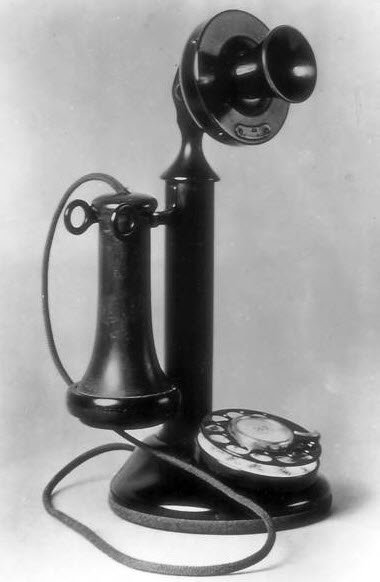-
Posts
3,835 -
Joined
-
Last visited
-
Days Won
212
Everything posted by Overland
-
I think the ASI is what Oliver recommends now, which makes me think that's what they used on the window that yellowed so badly. In the past, they used 3M 4200FC, which is a polyurethane based sealant and never seemed to cause any problems. The 4000UV is supposed to have much better UV protection than the 4200FC, so I'm hoping that it will be both problem free like the 4200, but as long lasting as the ASI.
-
DeeKay, my Lifeline AGM battery is actually in my truck. I installed four Battleborn LFPs while the trailer was sitting in the Oliver parking lot at delivery, so I don't have any first hand experience with anything else. I think Oliver was using Trojan T105 AGMs in 2017, which are excellent batteries. Sherry, I noticed that Trojan is now advertising their T105 AGM as being 217 Ah. I don't know if they've changed the chemistry or just the rating.
-
I used one of these to scrape off the old caulk, then cleaned up with acetone. I went back with 3M 4000UV sealant. I'd say that it was an afternoon of scraping and maybe two hours to recaulk and clean up. In addition to the windows, I did the water heater and furnace access panels and the outside electrical outlet. It wasn't difficult at all, probably as much effort as it takes to wash and wax. Having said that, I still need to go back and wax the areas I caulked. I should have gotten on a ladder and recaulked stuff up on the roof, too. I just pulled the mat out of the front closet on Monday and discovered that I have a leak somewhere, probably the plumbing vent directly over. Full points for fiberglass, since judging by the mold under the mat, that's been leaking for a while.
-
Hey, according to that, I should get 6 or 7 thousand cycles. I won't need batteries for another two millennia. Seriously, though, when we're using the trailer, average DOD is around 35% per day. That's two months out of the year. The rest of the year, I let them go to 60% before recharging, maybe 10 times during the year. So around 39% average? That corresponds to about 6000 cycles. At 70 cycles per year, that's a lifespan of 85 years. That's probably why my battery monitor only shows 10 cycles, if they're trying to normalize that to some expected number. It's also beyond anything I'd think is reasonable just from a shelf life perspective. If I were to get 1000 cycles out of AGMs, the same calculation is 1000/70 = 14+ years. Frankly, I'd wager that within 15 years, there will be a battery technology that will make me want to replace my LFPs anyway. So there you go - for practical purposes, the relative lifetime cost for me would be the initial cost. But if you're a full timer, using your trailer 150 days a year, the life span would be more like 5 years for AGM vs 20+ for LFP, which is something to consider. Still, it does seem like it would take that level of use to make the lifetime costs even out.
-
I think that's part of it, plus we're both still working and so the trailer is seeing limited use right now. I'm sure I'll start going through cycles more often once we're retired. But I also think part of it is exactly what counts as a 'cycle'. Someone more knowledgeable can correct me, but I think estimated life cycles assume discharging them each time to a certain state of charge, say 50% for AGM, probably more for LFP, and then recharging them fully. I think if you discharge them less, it doesn't have as much of an affect, proportionately, on the battery's life. In other words, I don't think that if you take your batteries to 90% say, that you've used 1/10 of a cycle. It's probably much less. Whatever it is, my Victron battery monitor has an algorithm that's supposed to give an accurate estimate of how many 'official' cycles you've put your batteries through regardless how many times you've actually charged them.
-
I think the lifetime cost argument is somewhat valid, if you're comparing amp hour to amp hour. But if you're buying a generator either way, then the Ah advantage of the LFPs is nil. So in real world usage, you're comparing $1000 of AGMs to $4000 of LFPs. The AGM will last ¼ the life of the LFPs, but they also cost ¼ less. So you could argue that for practical purposes they cost the same over time, and I'd agree. But there's a couple of things to consider. One is that $4000 up front is a harder pill to swallow. But more importantly is that at least for me, I'll never come close to even the minimum expected cycles of my LFPs. Looking at my battery monitor, I have 10 full cycles on my batteries right now, over three years. Assuming a minimum of 2000 lifetime cycles, I'll break even in, roughly, 650 years. In other words, for me, either battery type will die of old age before they die from use. I expect that it's the same for all but the most active full timers, and maybe even them. Perhaps the LFPs will still last longer, but I've seen no data on the shelf life expectancy of either so I can't say.
-
I agree to a certain extent. Like I said above, I think they're still more of a niche product that work well for a smallish subset of owners. But that's all down to the cost. The advantages that Susan listed are real - hands down, they're better batteries. If they cost the same as AGM, no one would hesitate to buy them. But the cost is a big factor. I was able to justify mine because I bought my whole electrical system at day one, getting some discounts, the full tax credit, eliminating things from our Oliver order that we would have otherwise paid a good bit of money for, and deciding to forgo a generator. With all that, I spent an extra $1000 or so. To me, that was an easy call for what I got in return - which wasn't for just the batteries, but the extra solar and all the cool electronics. I also had the compressor fridge which was going to cost me extra amp hours, so the bump in battery capacity was more easily defendable. If I were thinking about it on an in-service trailer today - where I'd already bought AGM's, a generator & accessories, inverter, generator port, and was looking at a smaller or no tax credit, I don't know if it would be such an easy a choice. Even assuming that your current batteries are dead and have to be replaced, LFPs are still going to be $2,500 - $3000 more than just getting a new set of AGMs. For that money, you'll get roughly 1 ½ to 2 days of extra battery storage and a handful of extra goodies (which, let's face it, are nice to pad a list of advantages but on their own aren't really worth much). Is that worth the money? Maybe? It entirely depends on your priorities and how well your trailer has taken care of you so far. And it's that second part that's the key. I don't think that I've seen single post from anyone who's been disappointed at the battery life of their Elite II. Sure, people always want more, but the fact is that 200 usable amp hours is sufficient for the vast majority of owners. And for the times that it isn't, most people don't mind carrying a generator. It's maybe a different story for an Elite I owner, due to the limited battery space available - a much easier choice imo for them to opt for some LFPs. If I were looking at a new Ollie right now, and the LFP pro package, I'd probably pass. Not probably - I know that I'd pass, just because having done all the research and being comfortable that I can wire my own electrical, I'd want largely the same system I have now rather than what Oliver is offering. What Oliver is selling is fine, but I don't think it's the best, and for the same money you can get the best, provided you're willing and able to do the work yourself. The one thing I'd change, apart from getting a few updated components, would be that I'd probably go with Victron batteries today instead of Battleborns, just because the price of those has gone down and I wouldn't care so much about the issue I had at first where I thought I'd have to do my first trip using Oliver's electronics. Even then, I'd still have the issue of a somewhat undersized solar array relative to the increased battery capacity. So I'd probably want to spend more for a portable solar kit (and hope it doesn't get stolen), rewire my truck to charge from it (unlikely), or give in and get a generator. And I really don't see the advantage of having both LFPs and a generator. With a generator, you've made the primary advantage of the LFPs practically irrelevant. Maybe you'll have to use it less often, but the real pain of a generator is just having to carry it and its fuel around all the time. Plus you've paid $3000 more for batteries and then another $1000 for a generator that you're hoping not to use. How many times do you have to be able to go without a generator to add up to $3000 worth of convenience? To me, this is all very similar to the debate about compressor vs absorption fridges. No doubt, one is better than the other; but the lesser of the two is still fine. If you can choose the better without great cost or trouble, then do so. But if it's going to cost a lot of money or be a pain to retrofit, then I think justifying it is going to be entirely an exercise of exaggerating to yourself the advantages of the one and the disadvantages of the other. That, or be comfortable with the fact that you're doing it just because you want to. Which is fine - I have a number of those projects under my belt.
-
Thanks - that makes much more sense. Can you tell us how many amps the heater pulls when engaged? Also, since you mentioned the latest BMS, is that something that's upgradable via your iPhone app?
-
Interesting. As for how you could determine it, I doubt you could without installing something like a Victron system.
-
LifeBlue's data sheet shows the heater coming on at 32°, which is more reasonable than what Oliver said. I think some clarification from @LiFeBlueBattery would be helpful regarding the need for a 120v connection when charging in the cold. I'm not really sure how that even works, I guess that the heat pack in the battery requires a certain number of amps before it will engage? Regardless, the inability to charge via solar in cold weather seems like it would be a significant limitation. Also some guidance on storage temps would be appreciated. If owners can feel safe with what Topband recommends (3 months at 113°), then I'd think that people shouldn't worry too much about it. If 95° is really the limit though, I think that people would be concerned about their warranty and the lifespan of the batteries.
-
I don't get that. You can stick a 12 volt heat pad to the side of the battery box for $40 if needed. And with Battelborns, you'd only need it if it gets into the mid-20s. The 120v requirement for charging the LifeBlues in even moderately cold temps would be a deal killer for me - it makes your solar worthless in the cold.
-
Most of that is true, but also largely countered by the original cost. $4000 is a lot, and while I think they work well for me, I don't know if I would recommend them to everyone. It's a question of relative benefit - yes they're better in many respects, but you have to think hard about how much those things really matter to you. I do question whether the LifeBlues are easier to maintain. I think my Battleborns are, to a certain degree. When I get back from a trip, I just have to charge them and turn off the solar. But I do have to check them every three weeks or so, since I leave a few electronics on, and turn the solar on for a few days to charge the batteries back up. Is that easier than AGM? A little, I think - certainly not enough on it's own to justify the expense. But it looks to me like the LifeBlues may even be a bit more difficult to maintain. You'll have to disconnect and check them like I do, but you also have to discharge them to 50% after each trip. But worse, if you think it's going to get over 100° in the battery box, which is definitely a possibility anywhere in the south if you leave your trailer in the sun, you have to remove them and store them inside? That's not easier, and I wonder what effect that has on your warranty. I mean, it's easily possible that they could get over 100° without you even knowing it, and if the BMS keeps track of that, do you lose your warranty? As far as bluetooth battery monitoring goes, you can add that to any battery bank for $150, so that's nice to have but easily gotten otherwise. And arguably there's an advantage to having a separate monitor. I also think that the longer life / lower lifetime cost is overstated. I can get 4 AGM T105s for $250 each, or a quarter of the price. So, the math is the same. And increased resale? Perhaps, but you also paid a lot more up front and I doubt if you'd get that back. As far as the solar credit goes, the battery is irrelevant to that. You can take the credit on your AGM upgrade as well, but of course is does soften the blow of the higher cost. It's well established that you can take it, so you'll have to explain what you mean by the jury being out. The truth I that unless you're a regular boondocker, I don't see the cost benefit working out. And for me, not buying a generator was not only the primary drive for going lithium, it also had a big effect on making the cost worthwhile - that's a $1000 swing in the numbers.
-
My experience is that we can get by fine without a generator, but then we don't camp in hot weather. If we know that we're going to need the AC at night, then we plan to stay at a campground with hookups. For occasional use, like the 30 minutes to an hour for a lunch stop, we do OK. We typically will run the AC for about 5 or 10 minutes and that cools the trailer down sufficiently to enjoy lunch. We'd rather eat without the racket of the AC anyway.
-
It does seem that the LifeBlue batteries have a narrower operating range than my Battleborns. Their recommended operating range is 24° to 135°. Actually, 24° is the temperature at which their BMS will cut off charging, as measured within the battery. So conceivably, the outside temperature could dip below that, since it would take a while for the batteries themselves to reach that temperature. To my knowledge, Battleborn doesn't have a recommended storage range, but I do know that Victron recommends -49° to 158° for their batteries, and they are generally pretty conservative with their numbers. Battleborn doesn't require you to discharge their batteries before storage. They do recommend disconnecting any trickle charge (solar).
-
Correct - all lithium batteries need a battery management system, or BMS, which will help keep the batteries from being charged in freezing temperatures, as well as protect them from over current, over charging, fully discharging, etc. It will also monitor the individual cells within the battery to make sure that they maintain the same voltage. To my knowledge, all of the major players either have the BMS built into their batteries, or sell a BMS to be installed separately. I think it would really only be an issue if someone is buying their batteries directly from China. Hopefully, anyone who goes through that much trouble will have done their homework.
-
I saw them at Overland Expo a few years ago and took note for future reference. It seemed like a pretty well made kit. You’d expect that the topper would wobble around when lifted but it was pretty solid.
-

Stocking the pantry and fridge for camping
Overland replied to SeaDawg's topic in General Discussion
Speaking as someone who has a compressor fridge, this repetitive hand wringing about the absorption fridge has gotten ridiculous. Sure, a compressor fridge is better, but not by that much. If you don’t like it, then just put a fridge freezer in your truck. That’s something that will actually make a difference in how you travel. -
I haven't read every post, but I've read most of them. Back when I joined, there was little enough content that you could read through all of the old posts, and so I did. And now I at least glance at most of the new posts just as part of being a moderator. Some things, like the classified replies, I don't pay a lot of attention to.
-
Surely the most regrettable change in the Elites was when they removed the stripper pole. 😝
-

2020 Ford Tremor 6.7 liter powerstroke & 2020 Ram power wagon
Overland replied to Patriot's topic in General Discussion
I hope you're able to get a better price than I am here. I just got a quote for doing the front cap of my wife's new car and it was $2500, plus another grand for the ceramic coating on top. Yikes - I want to do it since we tend to keep cars for a while, but that's a steep price to pay. I'd really love to do the ceramic coating on the Ollie, but I can't imagine what that'd be. -

2020 Ford Tremor 6.7 liter powerstroke & 2020 Ram power wagon
Overland replied to Patriot's topic in General Discussion
Oh, I didn’t catch on that you’d gotten one. Very cool, it should be a great truck! -

2020 Ford Tremor 6.7 liter powerstroke & 2020 Ram power wagon
Overland replied to Patriot's topic in General Discussion
They’re both cool trucks but the Tremor is better set up for towing. I'm surprised that no one is towing with it already - if I were buying today, I’d definitely give it serious thought. But then again there’s the new Raptor coming out. And the TRX. And the CyberTruck. Defender. Bronco. Too many cool trucks out there right now. -
You should read through these four topics - they'll give you a good idea of the pros and cons as well as modifications that other owners have done to make them work better: Yes, they're a little springy. How much so depends on the weight you put on it and how tall you set it. Also if you really crank down on the levers it will stiffen up a good bit. We have no issues eating on it or as a casual table, but I might find it annoying to type on - haven't tried, so I can't say for sure. In truth, I rarely notice. We've done a number of modifications to our trailer and this is one that we felt was really transformative. But for us, it took all the pieces coming together to make it work - folding tabletop, the side mount, cushions rather than mattresses, etc.
-
-
Since that outlet is in an unusual location, it's probably safe to assume that this is an older trailer; in which case the outlet could have been swapped out by a previous owner with a non-GFCI model, or perhaps one wasn't installed at the factory. Like Maniac suggested, check the outlet on the inverter itself, make sure the battery leads to the inverter are attached, etc. Also, just as an FYI, titling your topic with something relevant to the problem will get you more suggestions, and would also help others in the future when they're searching for solutions to their own problems. You can change it by editing your original post.





